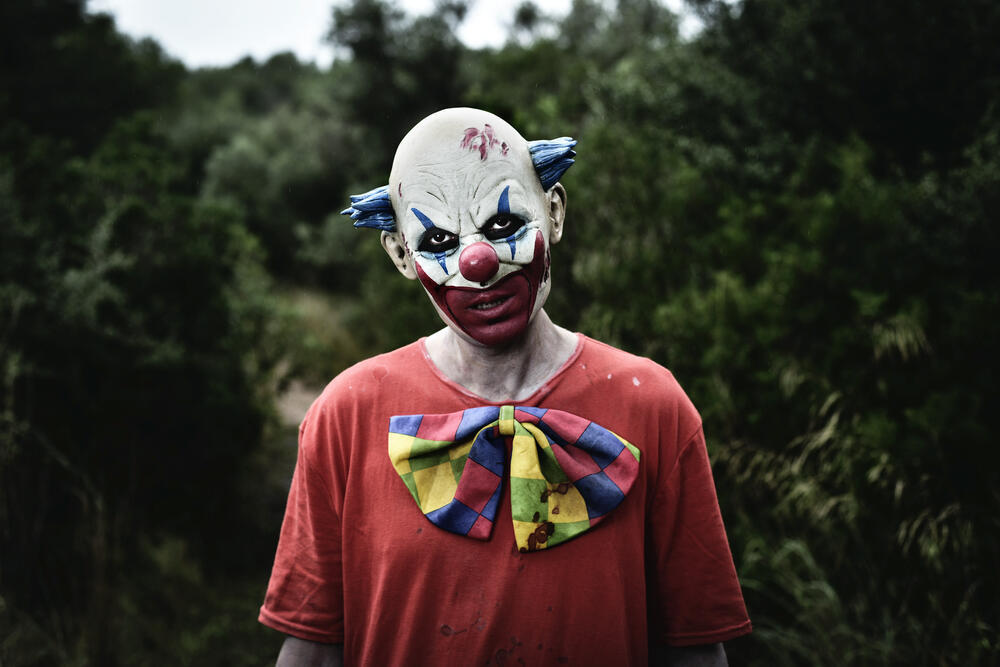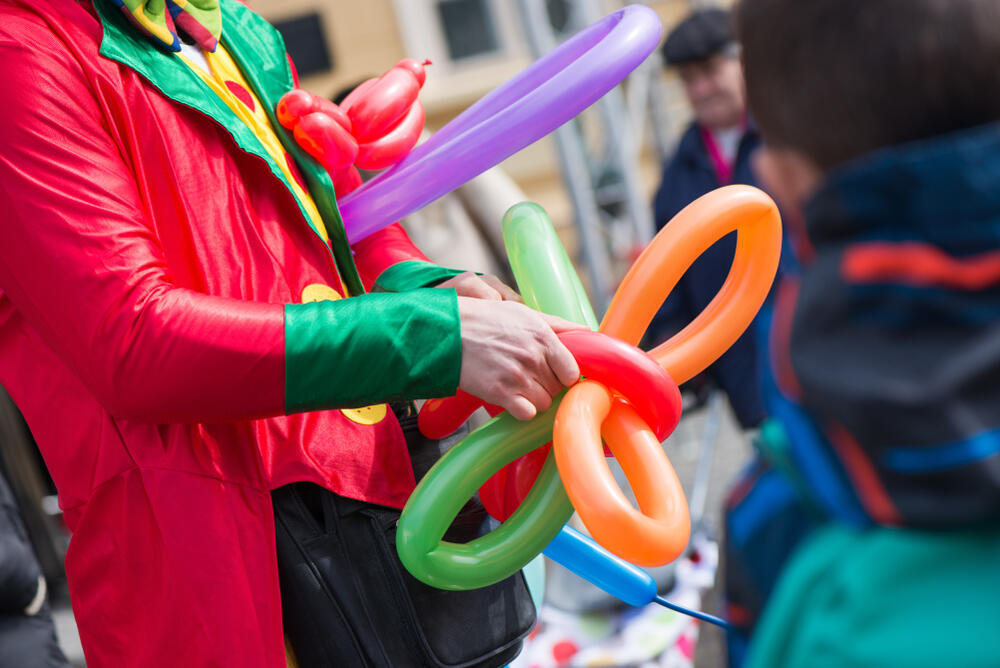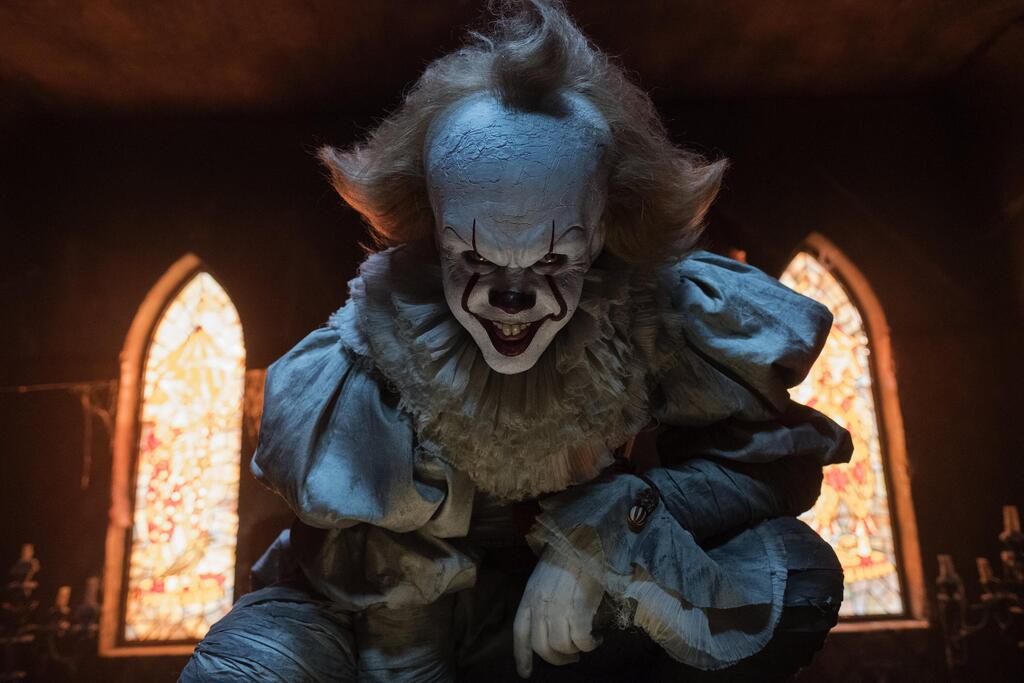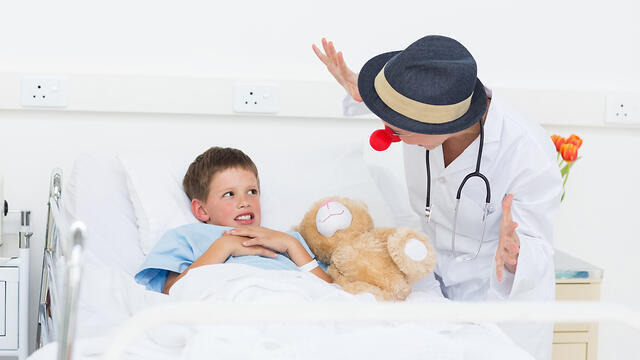In the season three premiere of "Ted Lasso," the mustached coach (Jason Sudeikis) takes his struggling football team to the depths of the London sewer system after predictions of relegation.
He explains that he did this with his son after he watched "It," as facing fears is important. "Nothing is scarier than a creepy clown."
A recent study conducted by the School of Psychology and Medicine at the University of South Wales found that over half of the 987 adult subjects surveyed from 64 countries (aged 18-77) are somewhat afraid of clowns.
In contrast, fears like the fear of heights and claustrophobia, which are more commonly discussed in the field of psychology, were far less prevalent.
When people were asked to describe what is it specifically that makes them fearful of clowns, they mentioned three primary categories:
1) Outer appearance
- The clown's makeup strips away their humanity and makes us uneasy.
- The exaggerated features created by the makeup can convey a sense of danger.
- The makeup hides facial expressions and emotions, making it difficult to know if the clown has harmful intentions.
- The predominant use of red in clown makeup, reminiscent of blood and death, elicits disgust and a desire to stay away.
2) Behavior
- The clown's unpredictable behavior, such as mischief-making, crossing boundaries, and invading personal space, infuses a deep sense of discomfort within us.
3) Experimentation
- The fear of clowns may be instilled by family members who have a similar fear.
- The negative portrayal of clowns in popular culture may contribute to the development of fear.
- An individual may develop a fear of clowns due to a past traumatic experience with a clown. The fear of clowns may be instilled by family members who have a similar fear.
The study's findings suggest that an unpleasant past encounter with a clown is not a primary explanation for the fear of clowns, as it ranked low on the list of factors. Unlike negative experiences with other costumes, animals, or natural phenomena, which do not evoke the same level of fear.
The fear of clowns, or "coulrophobia," is not recognized as a distinct phobia in the Diagnostic and Statistical Manual of Mental Disorders, due to the fact that clowns are usually only encountered in public spaces on rare occasions.
However, the term was coined in the 1980s to describe the phenomenon. "Coulrophobia" derives from the Greek word for "walking on crutches," referring to the stilts used by early clowns who walked among the audience in circuses and fairs.
The clown's inordinate makeup removes the human dimension from their appearance, causing discomfort, anxiety, and a sense of distrust.
It erases the facial markers of human expressions and smiles, leaving us to view clowns with a similar detachment to how we might see wax dolls, shop window models, humanoid robots, individuals with botched facelifts, or those who maintain a poker face despite internal emotional turmoil.
Clowns have been around for thousands of years, first appearing in the court of the ancient Egyptian monarch 5,000 years ago. Ancient Greek clowns wore padded clothes to enlarge their bodies, while clowns during the days of the Roman Empire wore pointed hats.
In the Middle Ages, clowns became increasingly popular and were given specific instructions to perform humiliating acts such as falling on their buttocks, getting punched, or being soaked with sewage to entertain the king and his guests. The purpose of these humiliating acts was to inflate the king's ego, present him as superior, and entertain the crowd.
As time progressed and societal norms changed, court jesters, who were considered clowns, were given more freedom to express themselves and upgraded in status. They became individuals who had the opportunity and reason to criticize the king and the aristocracy, reflecting the feelings of the people towards the upper class.
During the 1970s, John Wayne Gacy, also known as "the killer clown," would dress up as a clown named Pogo and visit children in hospitals. At night, he would lure boys into his car and rape and strangle them to death on the streets of Chicago.
After six years of terrorizing the city, Gacy was caught, convicted of 33 murders, and sentenced to death. He fought the verdict for 14 years before ultimately being executed by lethal injection.
The reputation of the evil clown became more entrenched after Stephen King's novel, "It", was released. The king (see what I did there?) of thrillers introduced horror in the form of Pennywise, the Dancing Clown, to attract its preferred prey of young children.
Various distorted clowns have been portrayed in popular culture, such as the toy clown that attacks the boy in the movie "Poltergeist," aliens disguised as clowns that massacre townspeople in the movie "Murderers without Identity," Krusty from "The Simpsons," who haunted Bart, and of course the one and only Joker, Batman's eternal nemesis.
The creepy clown craze that swept through North America soon went global, reaching as far as Europe, New Zealand, and Australia. Even Israel was not spared from the terror.
Just when the clown hysteria seemed to be dying down, the release of the horror movie "It" sparked a new wave of creepy clown sightings - this time targeting mostly boys. But like the infamous clown Pennywise, these eerie entertainers eventually vanished into thin air, leaving behind a trail of fear and confusion.
The irony is palpable when one considers the stark contrast between the malevolent image of scary clowns and the benevolent role of medical clowns. These are the ones who visit hospitals, adorned in full clown regalia and makeup, in an effort to bring joy and happiness to sick children.
However, a recent study conducted at the University of Sheffield in the United Kingdom suggests that the presence of clowns in children's wards can have the opposite effect, causing feelings of anxiety and distress instead of calmness. It seems the line between laughter and fear is a fine one indeed.





